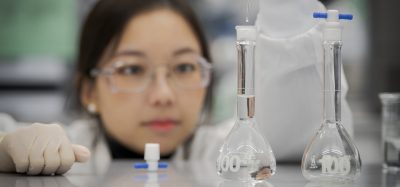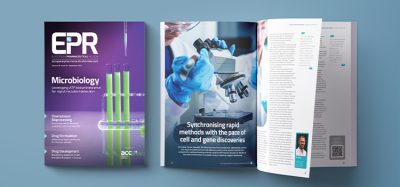NMR – Recent developments for isotope profiling
Fraudulent misrepresentation, substitution or imitation of premium products has always been a problem for both the regulatory authorities and the pharmaceutical industry. The task of finding and preventing counterfeit products is particularly challenging1,2. Several analytical techniques are available to help characterise pharmaceutical compounds: physical profile; X-ray diffraction; infrared spectroscopy; mass spectrometry (MS); liquid or gas chromatography; and Nuclear Magnetic Resonance (NMR) spectrometry.
A fingerprint from the impurity profile of the drug can be established and can be used to compare it with possible counterfeit APIs and to tackle composition problems by answering the following questions:
- Is the active molecule the right one?
- Is the active molecule present in the correct quantity?
- Is the composition (nature and quantity) of the excipients as expected?
- Does the trace analysis correspond to the compounds produced by the side reactions of the manufacturing process employed?
In most cases, these analyses cannot give any information on the origin of the reagents and solvents used, or on the synthetic pathway chosen, especially if no characteristic impurities are detected. It is clear that any impurity profile has a limit. It can be distorted or masked in the final product (tablet, pill, capsule, etc.) by dilution with other ingredients or by degradation processes, thus making the chromatographic approaches less effective in the fight against counterfeiting.
Furthermore, none of the aforementioned techniques are able to detect the following counterfeiting practices:
- Use of synthetic ingredients when a natural origin is labelled
- Deliberately copied process
- Patent infringement of current patents for generic medicines
- Products that are not made in the specified country of origin (circumvention of anti-dumping taxes or other duties).
To succeed in the detection of such frauds, the molecular probe has to be the API, which is not the case for any of the current techniques.
Recent work using stable isotope analysis to probe the molecules themselves has shown that this methodology is extremely effective for the detection of several different types of counterfeiting4-7: the isotopic profile of a given molecule appears as a label of origin. There are two main techniques for measuring isotope ratios for the elements constituting organic matter. The older and simpler is isotope ratio measurement by mass spectrometry (IRMS or irm-MS)8. However, this technique, in which molecules are completely combusted, provides only average values of the heavy isotope content of each element. Valuable information is lost. NMR spectrometry is the only analytical technique by which the quantification of each isotopomera of a given molecule can be achieved. Indeed, the direct access to site-specific natural isotope fractionationb opened up by 2H NMR (known as the 2H-SNIF-NMRTM method) has proved a powerful technique for verifying the origin of commercial products9. SNIF-NMR has been extended to carbon isotopes during the last decade10. The use of carbon provides major advantages over hydrogen, notably an increase in the number of parameters contributing to the molecular fingerprint and the possibility of analysing molecules for which 2H NMR is ill-adapted.
It is also important to note that isotopic quantitative NMR (iqNMR) is a different technique from quantitative 1H NMR, already widely used to check for counterfeiting through the purity of APIs, or to establish an impurity profile. This paper develops how iqNMR has been developed to measure, with a prerequisite precision of the order of 1‰c, the intramolecular 13C distribution of the API, in order to provide its 13C profile characterising its origin.
Developing Isotopic NMR
Figure 1 depicts schematically the parallel evolution of irm-MS and NMR spectrometry for measuring isotopes ratios. There is a gap of more than 25 years between the implementation of isotopic 2H NMR and a reliable isotopic 13C site-specific determination by NMR. This could appear paradoxical since 13C, as a probe, has obvious advantages compared with 2H: its greater sensitivity (natural abundance of ~1.1 per cent and ~0.015 per cent, for 13C and 2H, respectively), a wide chemical shift range with fewer overlapping signals, and narrow peaks giving a better signal-to-noise ratio (SNR). These are, however, offset by the narrower range of 13C/12C ratios found in organic molecules (50‰ and 500‰ for 13C and 2H, respectively) which means that a very high level of precision, of the order of 0.1 per cent, is required for 13C iqNMR. Therefore, the method must be able to detect a difference of 1‰ in the peak areas, a real challenge for the NMR spectroscopist. This is also the reason for which the expression of the isotope ratio 13C/12C is seldom used. Rather, isotope composition is typically expressed as δ13C, how much it deviates from an international reference.d
The major obstacle to reproducible measurement by 13C iqNMR was achieved by minimising the influence of inhomogeneity in the proton broad-band decoupling, found to be the most significant source of error11. The resulting approach, named single-pulse isotopic 13C NMR (a 90° pulse followed by a repetition delay including the acquisition time), has shown very acceptable repeatability12 and reproducibility13. Other NMR parameters that needed tackling were suppression of the nuclear Overhauser effect (NOE), coping with the long repetition delay between pulses which has to be set with respect to the longest relaxation time (T1), obtaining a high SNR, baseline correction, and peak deconvolution14.
Although 2H and 13C NMR could appeared as being complementary, certain limitations of 2H NMR should be highlighted, including:
- A long measurement time is required even for relatively simple molecular structures in order to obtain a 2H NMR spectrum with sufficient SNR. This typically requires several hours of spectrometer time
- Large molecules cannot be studied by 2H NMR because of the complexity of the NMR spectrum
- In relation to the use of carbon, 2H NMR provides a smaller number of parameters contributing to the molecular fingerprint.
Further current developments in 13C iqNMR continue to improve both the sensitivity and/or the required amount of material. In cases of molecules requiring excessively long experimental times (large molecules containing more than 15 carbons, long T1 values, etc.), with signals possibly overlapping, the exploitation of polarisation transfer techniques, in which the abundance of 1H is used to enhance sensitivity, is proving able to provide a 13C isotopic profile with shorter experiment time, higher sensitivity and the resolution of overlapping peaks15. We are currently investigating the increased resolution available in 2D NMR16, all the time keeping in mind the need for at least 1‰ precision.
Isotope profile and API counterfeiting
Defining a pedigree for the API
By working on the API molecule itself, it is envisaged that if a specific profiling could be built to define a fingerprint (or a tag or a bar code) answers could be provided to the questions proposed in Figure 2A:
- It could provide the manufacturer with a unique marker for the whole process used for making an API
- It could be used by regulatory agencies for improving the inspection of the drug master file (DMF) and as a tool to check the authenticity of the API according to its declared origin
- It could enhance supply-chain security from the manufacturing plant to the pharmacist store
- It could help to give confidence to the patient about the medicine used.
Origin of the tag
The isotope profile has the great advantage in characterising directly the active molecule. As depicted in Figure 2B, the amount of the 13C content at each carbon position accessible by the technique is a marker of the origin of the raw materials (including the API starting materials described in the DMF) and of the chemical intermediates (including synthons from natural or biotechnological origins), since their 13C profiles depend on the primary source (petroleum, plant, microorganism). This profile will be modulated according to the chemical reactions involved (for example the change of hybridatisation of carbon, sp2 to sp3, is associated to a known isotope effect17). In addition, it is also known that purification processes, such as distillation or chromatography, lead to quantifiable isotope fractionations [18]. As a result the intramolecular 13C profile measured by NMR will faithfully reflect the chemical history of the API.
Building up the isotope profile
The isotope profile can be composed of parameters from both irm-MS and iqNMR. The way in which compiling a number of parameters strengthens the correct classification and provides a unique signature characteristic of the API is outlined in Figure 2C. Although irm-MS provides only one parameter, the bulk value of the heavy element content, it can measure several elements (2H, 13C, 15N, 18O, 34S)19. By coupling separate techniques such as GC or LC to the mass spectrometer, this value can be obtained on several compounds (such as impurities) within a mixture. On the other hand, 13C iqNMR will provide as many parameters as carbons constituting the molecule and accessible by the method used. Thus irm-MS and 13C iqNMR are complementary.
Case studies of the application of isotopic 13C-NMR
So far, work has been performed on pharmaceutical ingredients such as prozac and fluoxetine6, aspirin and paracetamol20-22, ibuprofen and naproxen23-25. In these studies, different samples, from various manufacturers, were analysed, showing both supplier and batch dependence on 2H and/or 13C content.
Aspirin and paracetamol
13C isotope ratio analysis by NMR was applied to aspirin and paracetamol samples extracted from various over-the-counter sources22. It was found that the d13Cg values from irm-MS are contained within a range of about ~3‰ for both compounds. In contrast, the d13Ci values showed much larger variability for both acetylsalicylic acid and acetaminophen, both for inter-carbon-position comparison and for inter-sample comparison. This study clearly demonstrated how the individual d13Ci values can characterise specific origins for APIs by identifying the positions most sensitive to variation.
Ibuprofen and naproxen
13C iqNMR spectrometry of these APIs proved difficult using a one-pulse approach. Polarisation transfer (INEPT) methodology, however, has been successfully applied on these targets24,25. Notably, the experimental time was reduced by a factor ~8 compared with one-pulse experiments. With the INEPT sequence, quaternary carbons are not detected and 13C intensities strongly depend on 1JCH (13C–1H scalar coupling values) and on the number of attached protons. As a consequence, the observed relative intensities are no longer governed only by the intrinsic intramolecular 13C composition. However, since this relative 13C intramolecular composition is very repeatable, it can be used directly as a profile. This representation of the data can be considered analogous to any ‘omics’ approach with a comparison of data built up from a multiplicity of variables and collected from several samples using the same protocol. Thus the isotope profile could be considered as an ‘isotopomic’ study, and is very suitable for classification/discrimination purposes25. Figure 3 shows the relative 13C profile obtained by INEPT 13C iqNMR spectrometry from several samples of naproxen: each sample shows a specific profile, with an especially large variability of the 13C/12C ratios for carbons 7, 11 and 13.
Future developments of isotopic NMR
Even with relatively small molecules like ibuprofen and despite the large range of the 13C chemical shifts, some peak overlaps are observed that reduce the precision of the determination of isotope content. This challenge has been recently tackled by the development of 1H-13C two dimensional iqNMR, showing for the first time the feasibility of very precise 2D NMR measurements. An evaluation of the 2D NMR HSQC sequence has been performed in order to adjust each parameter. When applied on ibuprofen, a precision better than 2‰ was achieved in a short experimental time16. Works are in progress in order to improve both the precision and the sensitivity.
Acknowledgements
The work presented herein is a contribution of the whole EBSI Team of the CEISAM Unit Laboratory. The author is particularly grateful to Dr S. Akoka and Dr R.J. Robins for elaborating the manuscript.
Notes
a Isotopomers are molecules of the same chemical structure, having the same number of each isotope of each element, but in which the isotope differs as to its position in the structure.
b Fractionation is a process that affects the relative abundance of an isotope by selecting for or against the transfer of a given isotopomer to the next step in the process.
c One part in a thousand: 0.1 per cent.
d For an explanation of the different terms devoted to the expression of the isotope content, see Table 1.
References
- The European files, May 2010, N° 19 “Counterfeiting, food & beverage fraud, and contraband: Protecting consumers”, purchased from European Commission, 19 rue Lincoln, boîte 1 Bruxelles 1180, Belgium.
- Davison, M. in: John Wiley & Sons Inc.(Ed), Pharmaceutical Anti-Counterfeiting: Combating the Real Danger from Fake Drugs, John Wiley & Sons Inc., Hoboken, New jersey, USA,
- Gavin, P.F.; Olsen, B.A.; Wirth, D.D.; Lorenz, K.T.: A quality evaluation strategy for multi-sourced active pharmaceutical ingredient (API) starting materials. J. Pharm. Biomed. Anal. 2006, 41, 1251-1259.
- Jasper, J.P.; Weaner, L.E.; Duffy, B.J.: A preliminary multi-stable-isotopic evaluation of three synthetic pathways of Topiramate. J. Pharm. Biomed. Anal. 2005, 39, 66-75.
- Wokovich, A.M.; Spencer, J.A.; Westenberger, B.J.; Buhse, L.F.; Jasper, J.P.: Stable isotopic composition of active pharmaceutical ingredient (API) naproxen. J. Pharm. Biomed. Anal. 2005, 38, 781-784.
- Brenna, E.; Fronza, G.; Fuganti, C.: Traceability of synthetic drugs by position-specific deuterium isotope ratio analysis: The case of Prozac and the fluoxetine generics. Anal. Chim. Acta 2007, 601, 234-239.
- Santamaria-Fernandez, R.; Hearn, R.; Wolff, J.-C.: Detection of counterfeit antiviral drug Heptodin and classification of counterfeits using isotope amount ratio measurements by multicollector inductively coupled plasma mass spectrometry (MC-ICPMS) and isotope ratio mass spectrometry (IRMS). Sci. Justice 2009, 49, 102-106.
- Muccio, Z.; Jackson, G.P.: Isotope ratio mass spectrometry. Analyst 2009, 134, 213–222.
- Martin, G.J.; Martin, M.L.; Remaud, G.: SNIF-NMR-Part 3: From mechanistic affiliation to origin inference, in: G.A. Webb (Ed.), Modern Magnetic Resonance, Springer, pp. 1647-1658 (2006).
- Tenailleau, E.; Lancelin, P.; Robins, R.J.; Akoka, S.: NMR approach to the quantification of nonstatistical 13C distribution in natural products: Anal. Chem. 2004, 76, 3818-3825.
- Tenailleau, E.; Akoka, S.: Adiabatic 1H decoupling scheme for very accurate intensity measurements in 13C NMR. Magn. Res. 2007,185, 50-58.
- Caytan, E.; Botosoa, E.P.; Silvestre, V.; Robins, R.J.; Akoka, S.; Remaud, G.S.: Accurate quantitative 13C NMR spectroscopy: repeatability over time of site-specific 13C isotope ratio determination. Chem. 2007, 79, 8266-8269.
- Chaintreau, A.; Fieber, W.; Sommer, H.; Gilbert, A.; Yamada, K.; Yoshida, N.; Pagelot, A.; Moskau, D.; Moreno, A.; Schleucher, J.; Reniero, F.; Holland, M.; Guillou, C.; Silvestre, V.; Akoka, S.; Remaud, S.: Site-specific 13C content by quantitative isotopic 13C Nuclear Magnetic Resonance spectrometry: A pilot inter-laboratory study. Anal. Chim. Acta 2013, 788, 108-113.
- Caytan, E.; Remaud, G.S.; Tenailleau, E.; Akoka, S.: Precise and accurate quantitative 13C-NMR with reduced experimental time. Talanta 2007, 71, 1016-1021.
- Thibaudeau, C.; Remaud, G.; Silvestre, V.; Akoka, S.: Performance evaluation of quantitative adiabatic 13C NMR pulse sequences for site-specific isotopic measurements. Chem. 2010, 82, 5582-5590.
- Martineau, E.; Akoka, S.; Boisseau, R.; Delanoue, B.; Giraudeau, P.: Fast quantitative 1H-13C two-dimensional NMR with very high precision. Anal. Chem. 2013, 85, 4777-4783.
- Melzer, E.; Schmidt, H.-L.: Carbon isotope effects on the pyruvate dehydrogenase reaction and their importance for relative carbon-13 depletion in lipids. J. Biol. Chem. 1987, 262, 8159-8164.
- Botosoa, E.P.; Silvestre, V.; Robins, R.J.; Moreno Rojas, J.M.; Guillou, C.; Remaud, G.S.: Evidence of 13C non-covalent isotope effects obtained by quantitative 13C nuclear magnetic resonance spectroscopy at natural abundance during normal phase liquid chromatography. J. Chromatogr. A 2009, 1216, 7043-7048.
- Benson, S.; Lennard, C.; Maynard, P.; Roux, C.: Forensic applications of isotope ratio mass spectrometry, a review. Forensic Sci. Int. 2006, 157, 1-22.
- Deconinck, E.; van Nederkassel, A.M.; Stanimirova, I.; Daszykowski, M.; Bensaid, F.; Lees, M.; Martin, G.J.; Desmurs, J.R.; Smeyers-Verbeke, J.; Vander Heyden, Y.: Isotopic ratios to detect infringements of patents or proprietary processes of pharmaceuticals: two case studies. J. Biomed. Anal. 2008, 48, 27-41.
- Stanimirova, I.; Daszykowski, M.; Van Gyseghem, E.; Bensaid, F.; Lees, M.; Smeyers-Verbeke, J.; Massart, D.L.; Vander Heyden, Y.: Chemometrical exploration of an isotopic ratio data set of acetylsalicylic acid. Anal. Chim. Acta 2005, 552, 1-12.
- Silvestre, V.; Maroga Mboula, V.; Jouitteau, C.; Akoka, S.; Robins, R.J.; Remaud, G.S.: Isotopic 13C NMR spectrometry to assess counterfeiting of active pharmaceutical ingredients: Site-specific 13C content of aspirin and paracetamol, J. Pharm. Biomed. Anal. 2009, 50, 336-341.
- Acetti, D.; Brenna, E.; Fronza, G.; Fuganti, C.: Monitoring the synthetic procedures of commercial drugs by 2H NMR spectroscopy: The case of ibuprofen and naproxen. Talanta 2008, 76, 651-655.
- Bussy, U.; Thibaudeau, C.; Thomas, F.; Desmurs, J.R.; Jamin, E.; Remaud, G.S.; Silvestre, V.; Akoka, S.: Isotopic finger-printing of active pharmaceutical ingredients by 13C NMR and polarization transfer techniques as a tool to fight against counterfeiting. Talanta 2011, 85, 1909-1914.
- Remaud, G.S.; Bussy, U.; Lees, M.; Thomas, F.; Desmurs, J.-R.; Jamin, E.; Silvestre, V.; Akoka, S.: NMR spectrometry isotopic fingerprinting: A tool for the manufacturer for tracking Active Pharmaceutical Ingredients from starting materials to final medicines. Eur. J. Pharm. Sci. 2013, 48, 464–473.
Biography
Gérald Remaud, tenured Professor and Head of the EBSI Team at Nantes University, is a specialist in the development of new NMR methods for isotope ratio analysis. Previously, Gérald held a number of positions in the industry, following post-doctoral research in Uppsala (Sweden) into NMR methods for studying nucleotide chemistry.










Very interesting, and a nice summary.
Can this article please be corrected to include the figures.
Thanks!
Hi Michael,
I’m pleased you enjoyed the summary!
Unfortunately, being from such a historical issue, I don’t have access to the Figures to add these in. If you would like to access them, please view the digital issue for free at the link below:
https://www.europeanpharmaceuticalreview.com/article/25976/issue-3-2014-digital-edition/